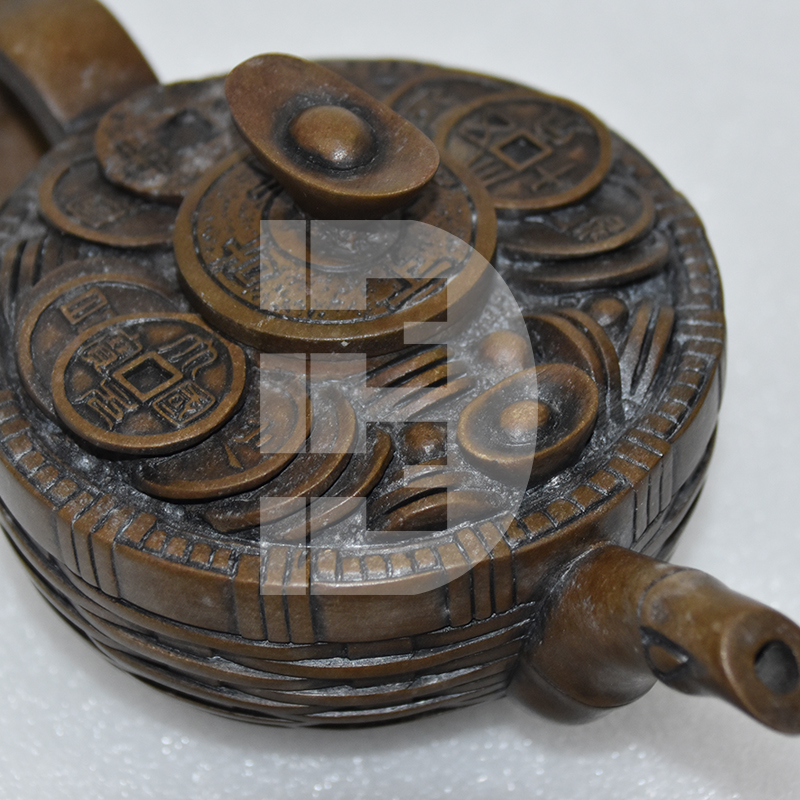Landscape Stone is a new type of composite material, which is composed of stone sculpture reinforcement material and resin matrix. It has excellent properties such as anti-corrosion, acid and alkali resistance, antioxidant, and UV resistance, and is widely used in public art, landscape architecture, architectural decoration and other fields. However, the original color of Landscape Stone is not beautiful enough, and it needs to be colored to improve its decorative effect and aesthetics. So, what is the process of coloring Landscape Stone?

1. Preparation work
Before coloring Landscape Stone, preparations must be made, including:
① Clean the surface: Use clean water and soap to clean the surface thoroughly to remove dirt, grease and other impurities.
② Polish the surface: Use a grinder to polish the surface to remove surface defects and burrs to make the surface smoother.
③ Fill cracks: If there are gaps or holes on the surface, fill them with fillers to ensure smoothness.
④ Apply primer: Before painting, you need to apply a layer of primer first so that the paint can better adhere to the surface of the stone sculpture.
2. Choose paint
Choosing paint is a very important step. It is not only related to the beauty of the stone sculpture, but also to factors such as durability and anti-corrosion. Generally speaking, the selected coating should have the following characteristics:
①Beautiful and bright colors: You can choose the appropriate color according to the style and shape of the
stone carving.
② Good wear resistance: The wear resistance of the coating determines the service life of the stone sculpture.
③ Strong anti-corrosion: Landscape Stone are usually used in outdoor environments and are susceptible to natural factors such as ultraviolet rays, wind and rain, so they require good anti-corrosion capabilities.
④Easy to apply: The coating is simple and convenient to apply and can dry quickly.
3. Paint construction
Paint construction is a critical step in coloring Landscape Stone. The construction is divided into two steps: primer and topcoat:
① Primer construction
The primer should be applied evenly to avoid hollowing or sagging. When applying primer, care should be taken to avoid bubbles on the surface caused by moisture or low temperature. In addition, it is also necessary to master the coating construction method during the construction process to avoid spraying too much or too little, resulting in local unevenness.
② Topcoat construction
Topcoat is a critical part of color application. Before applying the topcoat, the primer has dried and the surface has been prepared. When applying topcoat, the following points should be noted:
(1) First, master the paint ratio and control the consistency of the topcoat.
(2) The paint needs to be applied evenly to avoid sagging and color difference.
(3) Larger stone sculpture need to be carried out alternately to avoid leakage or dripping during construction.
(4) During construction, the coverage ability of the color should be taken into consideration. If you choose light-colored paint, you need to apply it several times. If you choose dark-colored paint, you need to wait for it to dry and then apply it one or two more times to increase the saturation.
4. Paint maintenance
After the coating is applied, it needs to be cured to ensure that the coating can optimize its anti-corrosion and aesthetic effects. The curing time is generally 1-2 days. This process mainly allows the paint to dry and solidify completely. During this process, care should be taken to avoid friction or scratches on the paint surface due to human factors or natural factors, so as not to affect the appearance and durability.
In general, the Landscape Stone coloring process involves multiple links, and detailed preparations and mastery of construction techniques are required for each link to achieve the perfect coloring effect.



